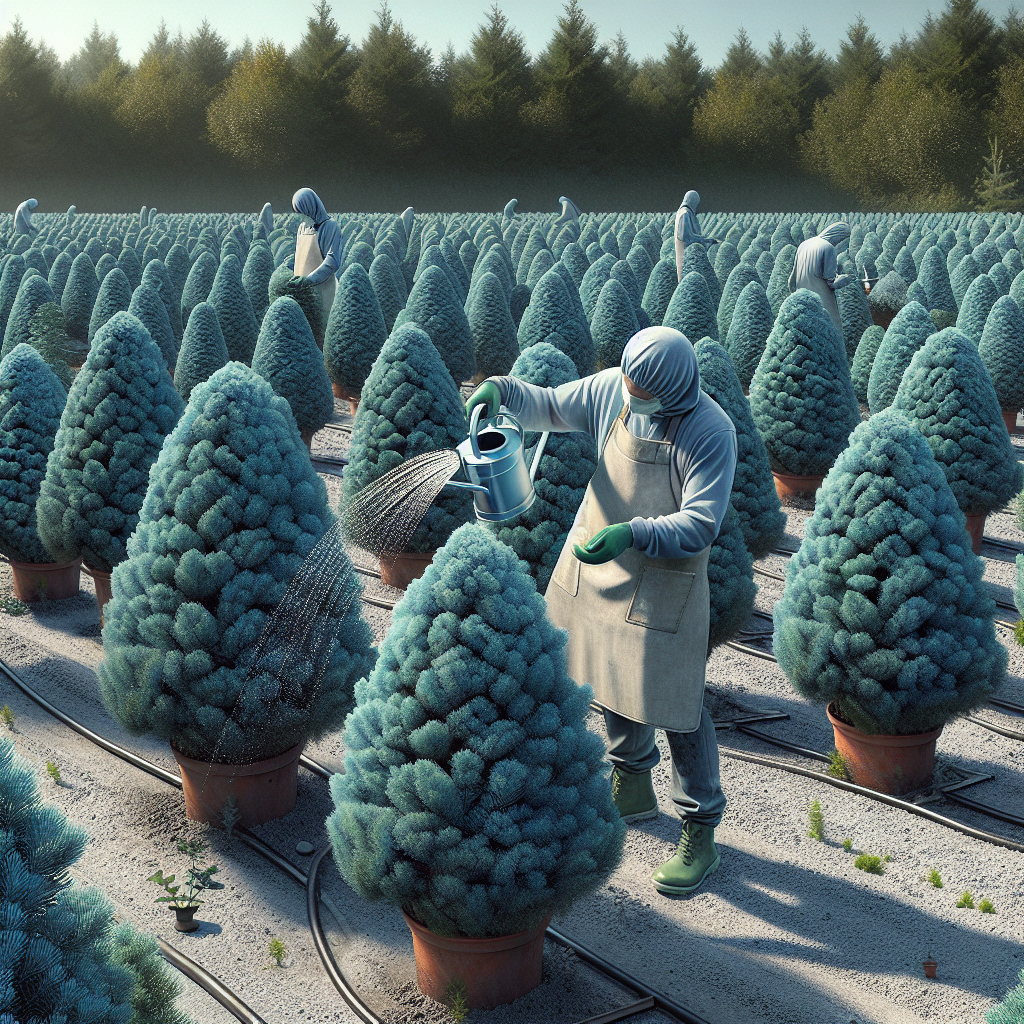Blue Point junipers are a popular choice for landscaping due to their striking blue-green foliage and hardy nature. However, like all plants, they require proper care and maintenance to thrive. One crucial aspect of caring for Blue Point junipers is ensuring they receive adequate hydration. By following a schedule for watering, you can help these plants reach their full potential and enhance the beauty of your landscape.
Blue Point junipers are drought-tolerant once established, but they still require regular watering, especially during hot and dry periods. Proper hydration is essential for maintaining the health and vigor of these plants, as well as promoting optimal growth and development. Without adequate water, Blue Point junipers can become stressed, leading to poor growth, wilting foliage, and increased susceptibility to pests and diseases.
To ensure optimal hydration of Blue Point junipers, it is important to establish a watering schedule based on the specific needs of these plants. Factors such as soil type, weather conditions, and the age of the plant will all influence how often you should water your Blue Point junipers. Here are some guidelines to help you create a watering schedule that will keep your plants healthy and happy:
1. Consider the Soil Type: Blue Point junipers prefer well-drained soil that does not retain excess moisture. Sandy or loamy soils are ideal for these plants, as they allow water to penetrate quickly and drain away from the roots. If your soil is heavy clay or compacted, you may need to adjust your watering schedule accordingly to prevent waterlogged conditions that can lead to root rot.
2. Monitor Weather Conditions: The weather plays a significant role in determining how often you should water your Blue Point junipers. During hot and dry periods, these plants will require more frequent watering to prevent drought stress. Conversely, in cooler or rainy weather, you may need to reduce the frequency of watering to avoid overwatering.
3. Consider the Age of the Plant: Young Blue Point junipers may require more frequent watering than established plants until their root systems have had a chance to develop fully. Newly planted shrubs should be watered regularly for the first year after planting to help them establish roots and become more drought-resistant.
4. Watering Techniques: When watering Blue Point junipers, it is essential to provide deep irrigation that reaches the root zone effectively. Shallow watering can encourage shallow roots near the surface, making plants more vulnerable to drought stress. Use a soaker hose or drip irrigation system to deliver water directly to the root zone without wetting the foliage excessively.
5. Mulching: Mulching around Blue Point junipers can help conserve moisture in the soil by reducing evaporation and suppressing weed growth that competes with plants for water. Apply a layer of organic mulch such as wood chips or pine straw around the base of shrubs while leaving space around stems to allow air circulation.
6.Check Soil Moisture: Before watering your Blue Point junipers, check the soil moisture level by inserting your finger into the soil near the base of shrubs about 1 inch deep. If it feels dry at this depth, it is time
to water; if it feels moist or wet,
wait a day or two before checking again.
Avoid overwatering by allowing
the top layer of soil
to dry out slightly between
waterings.
7.Water Early in The Day:
Watering early in
the day allows moisture
to penetrate deeply into
the soil before evaporating.
Avoid watering during
the hottest part of
the day when evaporation rates are highest,
as this can lead
to water loss without
benefitting plants.
8.Adjust Watering Schedule:
Be prepared
to adjust your watering schedule based on individual plant needs,
environmental conditions,
and seasonal changes.Seasonal changes such as spring rainfalls or summer heat waves can affect how frequently you needtowaterBluePointjunipersthroughouttheyear.Payattentiontoweatherpatternsandplantresponsesandmakeadjustmentsas neededtosupportoptimalhydrationofyourplants.”
Following these guidelines will help ensure that your Blue Point junipers receive adequate hydration throughout their growing season.Preventive measures such as monitoring weather patterns,maintainingproperirrigationtechniques,and adjustingyourwateringschedulebasedonplantneedsarekeytokeepingyourplantshealthyandvigorous.Inadditiontocarefulwatermanagement,itisimportanttobeproactiveinprotectingagainstothercommonstressorssuchasdiseases,insectdamage,andnutrientdeficiencies.Providepreventativecarebykeepingplantsprunedandwell-maintained,taking steps toenforceagainstpestsanddiseases,andprovidingsufficientnutrientsforoptimalgrowthandinsectresistance.Withtheseprecautionarymeasuresinplace,youcanlookforwardtoprovidingyourBluePointjuniperswiththecaretheyneedtoprosperandrewardsyouwiththeirbeautifulblue-greenfoliageyearafteryear.”














